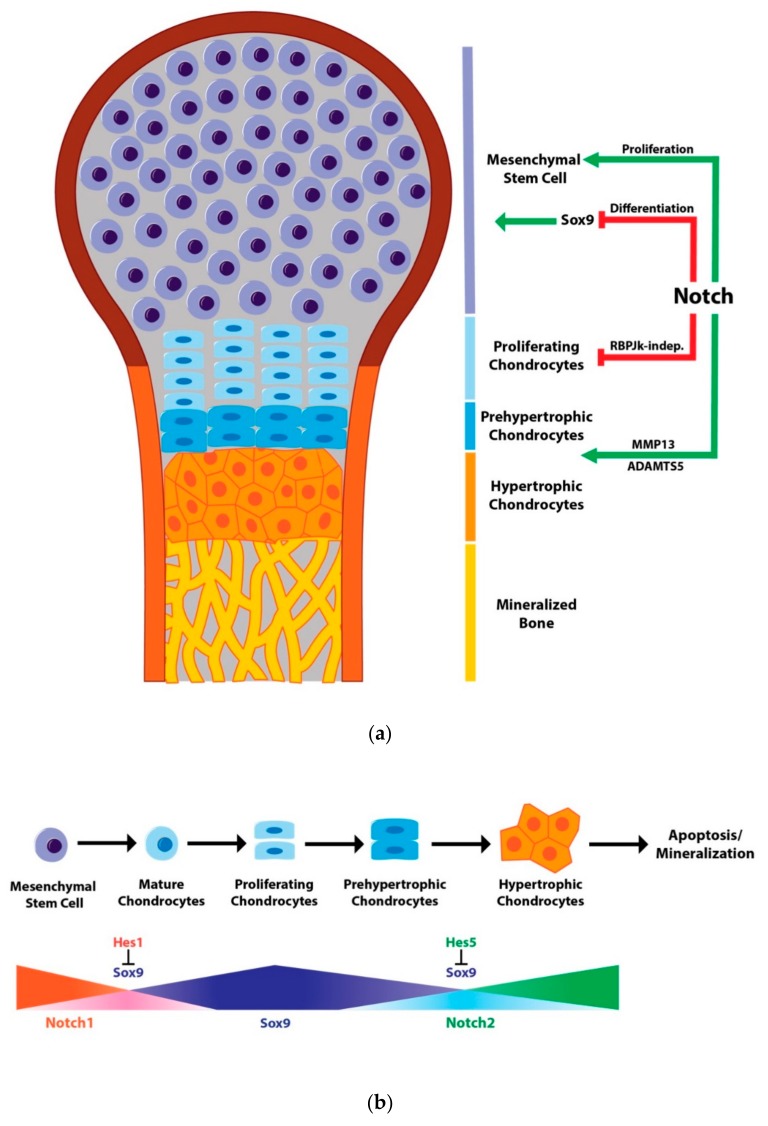Figure 1.
Notch signaling in chondrogenesis. (a) Notch signaling in growth plate development. Notch signaling maintains the mesenchymal cell population and functions to inhibit chondrogenesis through the reduction in Sox9 as well as Col2a1 and Agn transcription. As chondrocytes mature, Notch signaling promotes hypertrophy by blocking Sox9 expression while also promoting matrix catabolism through the induction of ADAMTS and MMP13 expression. Notch signaling also regulates chondrocyte proliferation and growth plate organization in a non-cell autonomous manner through its expression in the developing perichondrium. This regulation has been shown to occur independently of RBPjk; (b) Notch signaling in chondrocyte maturation. Notch1 expression is highest in mesenchymal progenitors and prevents chondrocyte maturation by inducing Hes1 expression that in turn blocks Sox9 and Col2 transcription. Sox9 levels increase as chondrocytes mature and proliferate during growth plate maturation. This increase is then reduced by Notch2 and Hes5, allowing proliferating chondrocytes to undergo hypertrophy and eventually mineralization.

